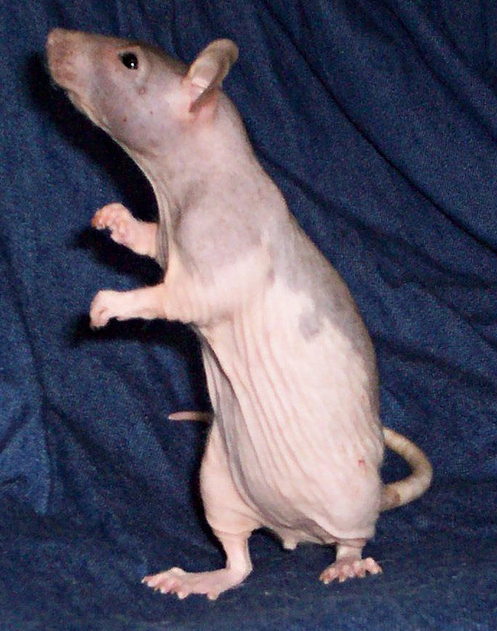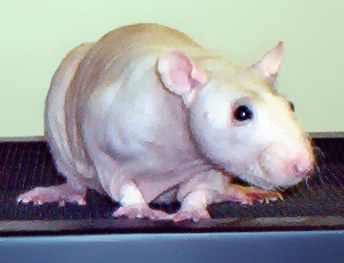
Looking after a hairless rat is a little different to a typical pet rat. The care is roughly the same, and the rat’s diet is also the same, but there are a few other things to keep in mind, including:
Housing: House them with other hairless rats if you can, because they tend not to get along. For whatever reason, these two pet rats just don’t mix very well. If you have no other choice but to house them together then make sure you monitor them and separate them before bullying begins. As someone who has experienced this with hamsters, I can tell you it is not pretty and it doesn’t end well if you don’t stop them as soon as it begins (and sometimes, even if you’re a few minutes late, it’s too late).
Aquariums are Okay for Hairless Rats: They are preferred by hairless rat owners as they tend to be better suited for their needs. These rats can scratch easily, but with an aquarium there is little risk of this happening.
Cuddling: Make sure they can make themselves cosy and warm if needed. The lack of fur means they are not as resilient as other rats and can not fend off the cold winter nights as easily. Extra bedding and covered spots in their cage should suffice.
Humidity: Hairless rats have much more sensitive skin that their furry counterparts. So, keep an eye on the humidity and make sure it doesn’t drop too low. If the room they are in is very dry then they will be dry as well, and that could lead to all kinds of skin problems. At best this will make them uncomfortable, at worse it could cause cuts, damage and longer term issues.
Hairless Rat Diet

It has been said that you should feed hairless rats a different diet to furry rats. The fact that they have no fur means they use up more energy just to keep warm. As a result, they will likely need more calories, as well as more fat and protein. This certainly seems to be the case, so don’t assume that you can feed them the same as furry pet rats and make sure you keep their additional needs in mind.
Hairless rats may also drink more water and this should be fresh water. Keep an eye on their bottle and make sure this doesn’t run dry. It doesn’t take long for them to start experiencing health problems after going without water.
Caring for Hairless Rats with Cuts and Scratches
What should you do it you hairless rat gets a cut or a scratch? These are actually common in all rats, especially when they are housed in groups. They scrap, just like any other families, and this can result in everything from minor marks to significant cuts. With hairless rats, these otherwise minor issues become quite serious because their skin is less protected and more damage is done.
By choosing the right cage, bedding and playmates, by checking water intake and humidity and by monitoring them closely, you can decrease the risk drastically. However, if it does happen, you don’t need to worry too much.
Small scratches and cuts will heal on their own. If the cut is large or you are worried about infection, simply clean the wound and keep an eye on it. Some rat owners also advise the use of a Skin Glue, but in most cases it will heal on its own. And when it is too big to heal on its own, you should be seeking help from a vet immediately.